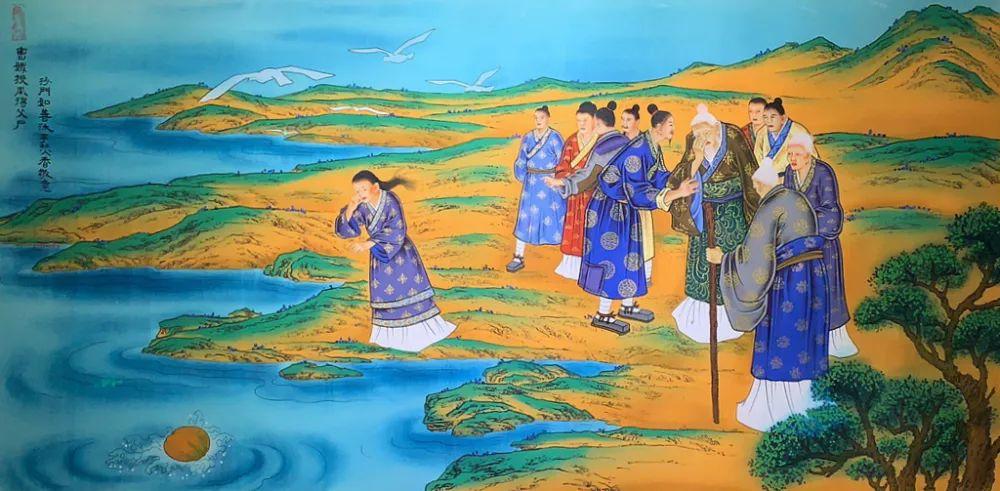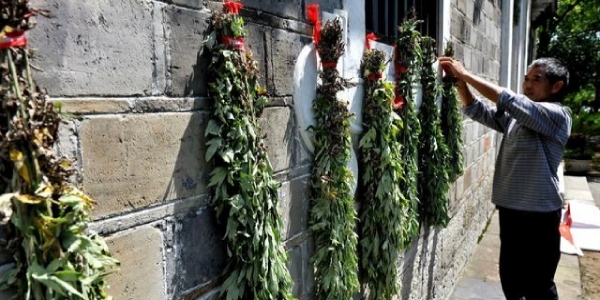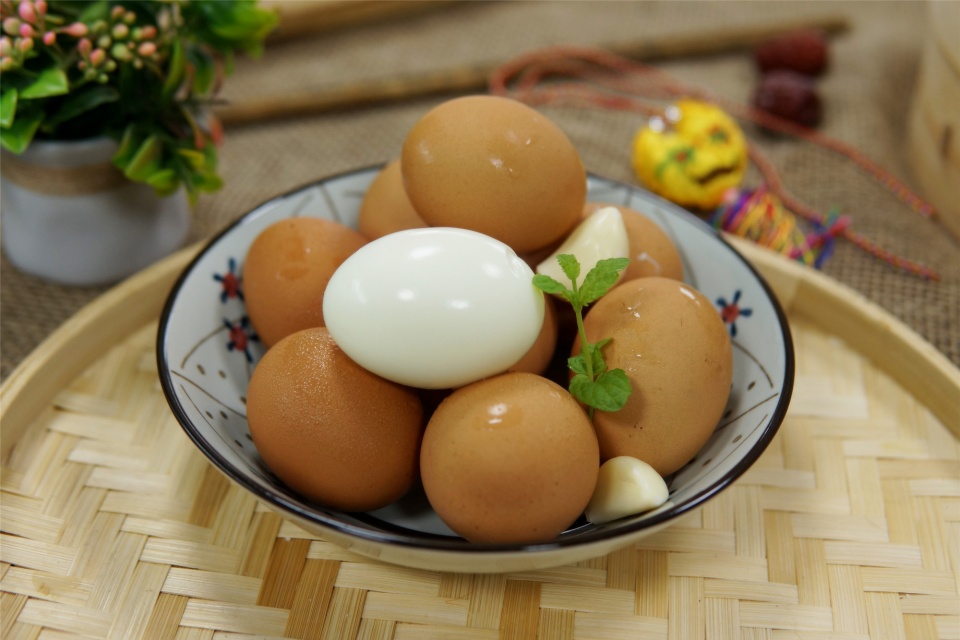Heart-Warming Dragon Boat Festival 2021 Virtual Celebration

Dragon Boat Festival (Duanwu; 端午) is on the 5th day of the fifth lunar month every year and it is one of the traditional festivals in China. Originally Dragon Boat Festival meant the beginning of the 5th day of a lunar month. Late the character for ‘Wu’(五) was changed to a word meaning the 5th lunar month in the ancient calendar and this word was still pronounced ‘Wu’(午). Thus Dragon Boat Festival became the 5th day of the 5th lunar month.

Origin Stories of Dragon Boat Festival
1.Qu Yuan (屈原)

Qu Yuan (340 B.C. – 278 B.C.) was a high-ranking official in the State Chu during the Warring State Period (475 B.C. – 221 B.C.). Duke Huai of Chu regarded him highly. When the seven states in the Warring States were fighting for hegemony, Qu Yuan advocated a policy of alliance with the State of Qi to fight against the State of Qin, the most powerful state both in politics and military strength. But Duke Huai of Chu listened to slanders from some corrupted officials and decided to reach an agreement with the State of Qin making his own country fall into the trap of Qin. Later Duke Huai of Chu died in exile.
After Duke Xiang of Chu ascended the throne he didn’t learn the lesson. On the contrary he again was influenced by some corrupt, jealous officials again Qu Yuan. He removed Qu Yuan from the imperial court and deported him to a remote place. In 278 B.C. the State of Qin occupied the capital of Chu and killed Duke Xiang. After he heard the terrible news that the State of Chu was conquered Qu Yuan was in such despair tht he drowned himself in the Miluo River.
When people heard that Qu Yuan committed suicide in the river, fishermen and other people from nearby run to the river trying to find his body, but they found nothing. People didn’t want Qu Yuan’s body to be devoured by fish in the river, so they threw cooked rice and eggs into the river to feed the fish. Later they threw packets of cooked rice wrapped in tree leaves and tied with colorful strings, which became the original version of Zongzi. Some Chinese herbalists also dumped the realgar wine into the river to make the mythical dragon drunk. The legend said that Qu Yuan drowned himself on the 5th day of the fifth lunar month. Since then every year on this day people would race dragon boats, make Zongzi and drink the realgar wine in memory of Qu Yuan.
Qu Yuan was not only a patriotic official; he also left behind many unforgettable poems. He was the earliest known poet in China. He created Chuci. The style of Chu phraseology. When he was despair he wrote some of his greatest works such as Li Sao (The Lament), Tian Wen (Asking Heaven) and Huai Sha (Embracing Sand). The poet QuYuan was deeply remembered by the people. Therefore, the Dragon Boat Festival is also known as the Poet festival.
2.Wu Zixu (伍子胥)

Wu Zixu was an advisor of the State of Chu at the end of Spring and Autumn Period (770 B.C. – 476 B.C.). He defected to the State of Wu because his brother was killed by Duke Ping of Chu. He assisted Duke He Lv of Wu to defeat Chu and seized the power. To revenge he dug out Duke Ping’s corpse from his grave and flooged it three hundred times.Later after Duke He Lv died, his son Fu Chai ascended the throne.
Later the State of Wu won the battle against the State of Yue, Duke Gou Jian of Yue begged for peace. Wu Zixu strongly urged Duke Fu Chai to completely destroy Yue. But Duke Fu Chai believed the slanders from Minister Bo Pi and bestowed Wu Zixu a sword to committed suicide he asked Duke Fu Chai to hang his eyeballs high upon the city gate so that he could see with his own eye how Yue conquered the State of Wu. Duke Fu Chai got so mad that he ordered to put Wu Zixu’s body in a bag and throw it to the river. This took place on the 5th day of the 5th lunar month and it became another legend for the Dragon Boat Festival.
3.Cao E (曹娥)

According to another legend, the Dragon Boat Festival was in memory of Cao E in the Eastern Han Dynasty, who drowned herself in the river in an act of filial piety.
Cao E was born in Shangyu, Zhejiang Province in the Eastern Han Dynasty (25B.C.-220B.C.). Her father accidentally fell into the river and died. She searched for his body for three days to no avail. The fourteen-year-old Cao E cried day and night. After seventeen days on the 5th dat of the 5th lunar month she drowned herself in the river. Five days later her body surfaced on the water holding her father’s corpse. The head of the county government decided to build a monument to commemorate her act of filial piety. Her monument is in Shaoxing, Zhejiang and the words were written by Wang Yi in the Jin Dynasty (265B.C.-420B.C.). Later a temple named after her was built at the place where she committed suicide to remember her act of filial piety. Her hometown and the river where she was drowned herself were also named after her.

7 Tradition Customs of Dragon Boat Festival
1.Eating Zongzi (Sticky Rice Dumpling)

The most commonly known food in the Dragon Boat Festival is Zongzi made from glutinous rice wrapped in reed leaves and tied with cotton threads.
Zongzi has a long history and a great variety. Early in the Spring and Autumn Period it was made of millet and wrapped in wild rice stems in the shape of an ox horn. It was called “millet horn (角黍)” and used in ancient rituals. People then considered animal horns magical objects that could communicate with immortals. Therefore, Zongzi was made in the shape of a horn.
Zongzi officially became the food of the Dragon Boat Festival in the Jin Dynasty (265-420). In addition to glutinous rice, a Chinese herb called “Yi Zhi Ren” was also used as an ingredient. Cooked Zongzi was called “Yi Zhi Zong(益智粽)”. In the Southern and the Northern Dynasties (420-589), more ingredients were added including meat, chestnuts, dates and red beans.
Zongzi became very popular in the Tang (618-907) and the Song (960-1279) Dynasties with additional ingredients of nuts and dried fruits. In imperial palaces of Tang and Song dynasties, a large number of dough dumplings and Zongzi, which needed to be made before the Dragon Boat Festival, were used for people to shoot with small horn bows, and those shot were expected to be eaten by the shooters. Among the ordinary people, the following game was popular during Dragon Boat Festival. People unfastened leaves of Zongzi to compare their lengths, and the one who had the longest leaves would become the winner.
In the present day every year in the beginning of the fifth lunar month, most households will soak glutinous rice, clean reeds leaves and wrap Zongzi in different styles. In the south fillings are mostly bean paste, meat, ham and egg yolks. The most famous Zongzi comes from Jiaxing, Zhejiang. In the north small dates of Beijing are mostly used in the fillings. The custom of having Zongzi has been prevalent ever since and it spread to Korea, Japan and other countries in the southeast of Asia.
2.Racing Dragon Boats

It is said that racing dragon boats started in memory of Qu Yuan because people tried to rescue him and raced their boats to save him on the 5th day of the 5th lunar month. But in fact racing dragon boars already came into being in the Spring and Autumn Period (770 B.C. – 476 B.C.). According to historical records, after Duke Gou Jian of Yue was released by Duke of Wu, he secretly started building his own navy. He wanted to conquer the State of Wu on the 5th day of 5th lunar month in the name of training training his sailors.
Racing dragon boats is a serious competition. In some regions, before the race, a ceremony called “the dragon head ritual” is held during which a carved dragon head would be placed in Qu Yuan’s temple. The participants cover the dragon head with a red ribbon and the ritual master reads the oration aloud to literally open the dragon eyes. Everybody bows three times to the dragon head before heading to the racing place. Whenever on the 5th day of the 5th lunar month, people coming out of cities and towns crowd at banks of rivers where the dragon boats races take place. The rule of the competition is to start simultaneously to race the same distance and whoever reaches the finishing point wins the race. Accompanied with drums,gongs and firecrackers, all dragon boats dash out and the sportsmen paddle on the beat of the drums. Cheers from people watching along the river banks make the atmosphere more intense and lively.
Dragon boat racing gradually spread to Japan, Vietnam and the United Kingdom. It was included in the China’s national sports program in 1980. Since the the “Qu Yuan Cup” dragon boat competition has been held every year.
3.Hanging Mugwort and Sweet Flag

People believe that the 5th day of the fifth lunar month was the day when five poisons (scorpion, centipede, snake, spider and toad) come out. Therefore, they have to use any method possible to repel any harm from these five poisons.
Stems and leaves of the mugwort plant contain essential oils and volatilized aroma. The plant, when burned, produces a unique aroma that can be used as mosquito and insect repellents. In the practice of the Chinese traditional medicine it is believed to be beneficial to women’s health, common cold, coughing, asthma and clearing mucus. Moxibustion of mugwort is used as an important medicinal herb. Therefore, people believed that hanging mugwort on the door would keep them healthy.
In addition to mugwort, sweet flag is also hung during the Dragon Boat Festival. It is a perennial wetland plant. Its long and narrow leaves also contain essential oils with a kind of volatilized aroma, which can help to make people refresh, improve their bones and kill insects and germs. The sweet flag leaves shape like a sword. People weave mugwort leaves into a tiger shape and believe that the sweet flag sword and the mugwort tiger combined are a symbol of destruction of evils and protection of good health.
Hanging mugwort and sweet flag is an important part of the Dragon Boat Festival. Besides, people need to clean and sprinkle their yards with realgar wine and also drink it for the purpose of getting rid of anything rotten to prevent germs and diseases. These activities represent the good tradition of the Chinese people to be clean and healthy.
4.Tugging Grasses Game

The so-called grass tugging game means that there are two persons tugging with grass tendon and the one whose end is broken will fail in the game. There appeared a poem called Fuyi in National Customs: Zhounan of the Book of Songs, telling the custom of women and children playing tugging grasses. The funny story of King Wu and Xishi tugging various grasses was recorded in the book of Zhongwu Jiwen. Plantain seeds, which are frequently used in this game, also got the name of court grass in southern dialect of China.
5.Winding Silk Thread

People also tie colorful threads in children’s wrists, ankles and neck in the morning of the Dragon Boat Festival. The colors representing are blue, red, white, black and yellow. According experts of Yin and Yang, the blue color belongs to wood representing the east; the red color is fire representing the south; the white color is gold representing the west; the black color is water representing the north and the yellow is earth representing the center. Having silk threads of five colors represents people’s wishes to keep any danger from their children and have grow up in good health. This demonstrates the virtues of the Chinese tradition of loving children.
6.Eating Eggs

In addition to Zongzi, there is also the tradition of eating eggs. Eggs can come from hens, ducks or geese. In the morning of the Dragon Boat Festival when children are still in bed, their parents will feed them cooked eggs. In the regions south of the Yangtze River, children have a mesh bag of eggs hung in the front to represent their prayer for health and peace. In the countryside of Henan and Zhejiang people have the tradition of eating eggs with garlic, which they believe can drive five poisons away and have a good health.
7.Drinking Realgar Wine

Realgar wine is made of white wine with realgar. Realgar, a sulfide mineral, is said to have the capabilities of repel poisonous insects and clear mucus according to the famous The Outline of Chinese Herbal Medicine. People drink the realgar wine also apply it to children’s foreheads, ears, noses, hands or feet to keep insects away. There was a folk belief that the five poisons could be overcome by the realgar wine because in the fairy tale about The Legend of Madame White Snake, a woman-shaped white snake returned to her original form of snake after drinking the realgar wine. Today, modern medicine research found that realgar contains poisonous substances such as mercury and arsenic. It can be used to kill insects, but it is not appropriate to drink it.

Event Details





